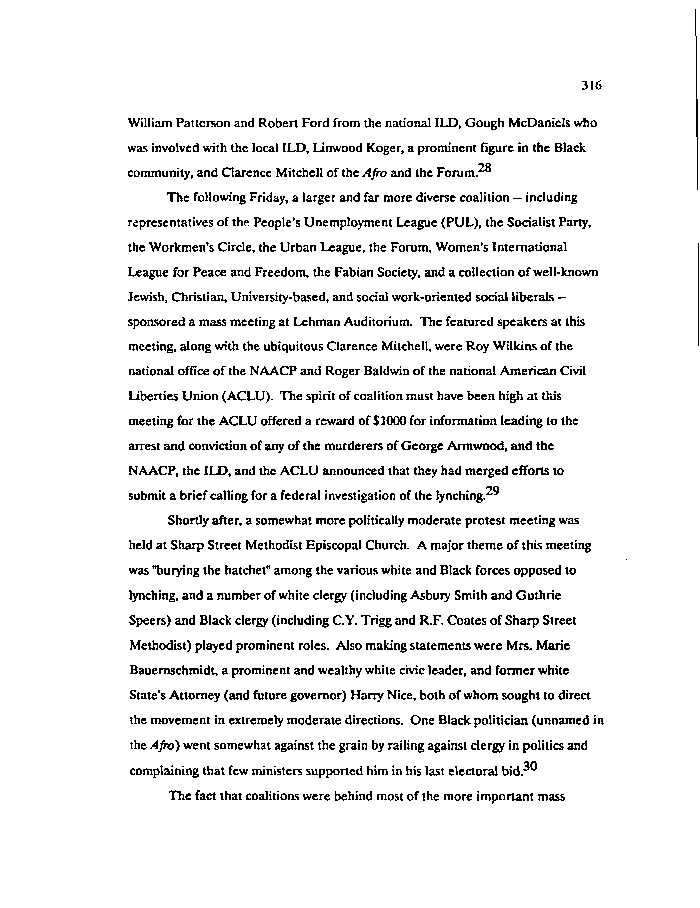|
316
William Patterson and Robert Ford from the national ILD, Cough McDaniels who
was involved with the local ILD, Linwood Koger, a prominent figure in the Black
community, and Clarence Mitchell of the Afro and the Forum/*
The following Friday, a larger and far more diverse coalition — including
representatives of the People's Unemployment League (PUL), the Socialist Party,
the Workmen's Circle, the Urban League, the Forum, Women's International
League for Peace and Freedom, the Fabian Society, and a collection of well-known
Jewish, Christian, University-based, and social work-oriented social liberals -
sponsored a mass meeting at Lehman Auditorium. The featured speakers at this
meeting, along with the ubiquitous Clarence Mitchell, were Roy Wilkins of the
national office of the NAACP and Roger Baldwin of the national American Civil
Liberties Union (ACLU). The spirit of coalition must have been high at this
meeting for the ACLU offered a reward of $1000 for information leading to the
arrest and conviction of any of the murderers of George Armwood, and the
NAACP, the ILD, and the ACLU announced that they had merged efforts to
submit a brief calling for a federal investigation of the lynching/"
Shortly after, a somewhat more politically moderate protest meeting was
held at Sharp Street Methodist Episcopal Church. A major theme of this meeting
was "burying the hatchet" among the various white and Black forces opposed to
lynching, and a number of white clergy (including Asbury Smith and Guthrie
Speers) and Black clergy (including C. Y. Trigg and R.F. Coates of Sharp Street
Methodist) played prominent roles. Also making statements were Mrs. Marie
BauernschmidL, a prominent and wealthy white civic leader, and former white
State's Attorney (and future governor) Harry Nice, both of whom sought to direct
the movement in extremely moderate directions. One Black politician (unnamed in
the Afro) went somewhat against the grain by railing against clergy in politics and
complaining that few ministers supported him in his last electoral bid.
The fact that coalitions were behind most of the more important mass
|

